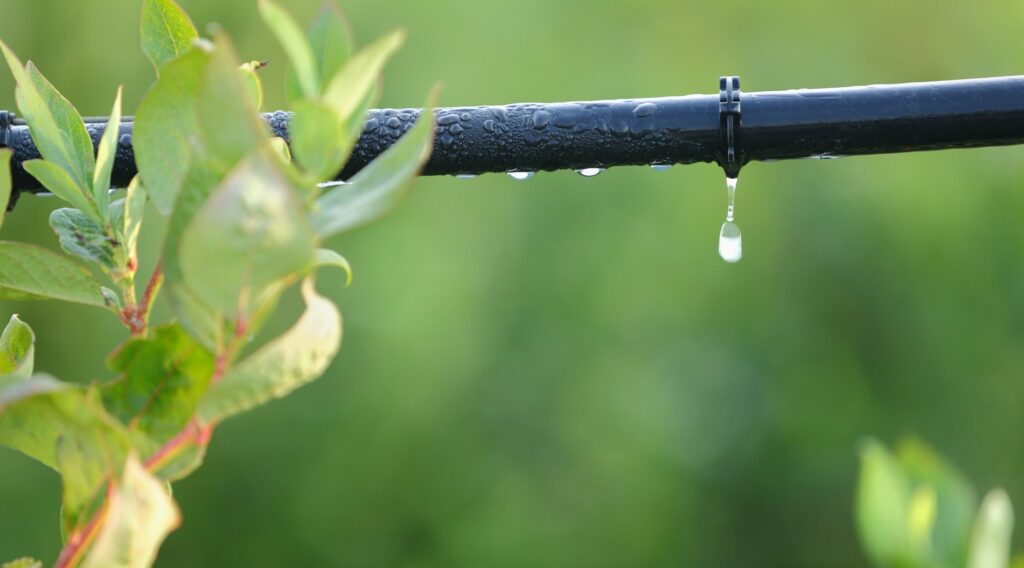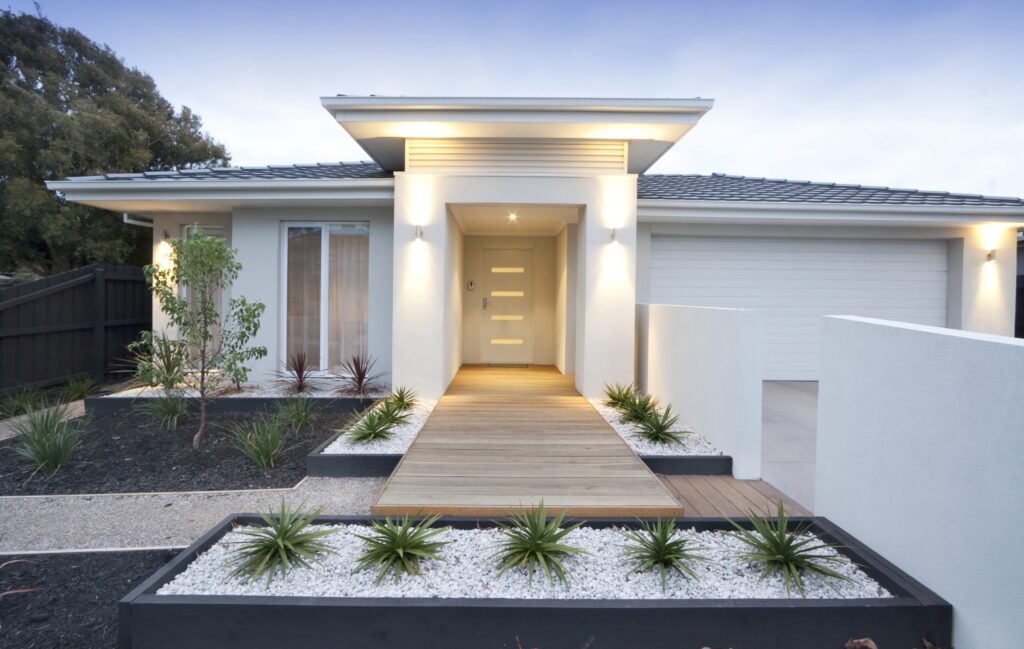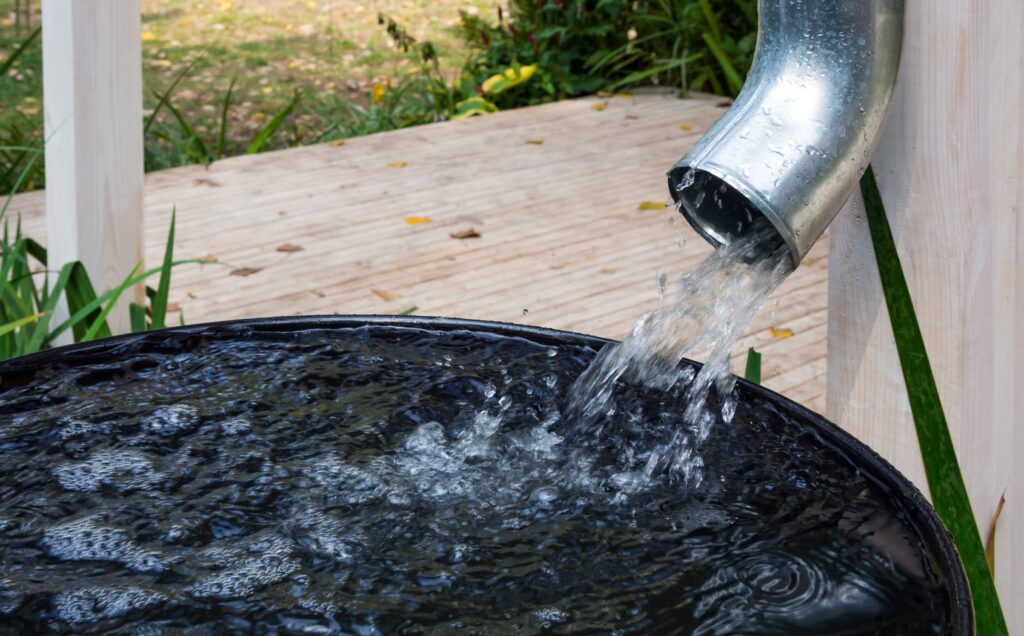Are you tired of fussing with water use restrictions in a drought, high water bills, irrigation issues, and unnecessary water waste? You’re not alone. Many homeowners struggle to find a balance between keeping a well-manicured lawn and the financial or municipal restrictions that come with watering a grass lawn.
Here are eight water savings ideas approved for PACE financing that you can implement in your yard to reduce your water consumption without depleting your home’s curb appeal.
1. Hardscape Your Landscape
By replacing your grass with a combination of gravel, rock features, succulents, other desert native plants, and stone walkways, you can have an attractive front yard that requires very little (if any) water in its upkeep. This method of drought-tolerant landscaping increases your outdoor water efficiency, while also eliminating the need for a lawnmower. Get creative with your hardscaping or xeriscaping ideas, and embrace a new water-efficient landscape.
2. Go Green with Artificial Turf
The average American family uses 96 gallons of water on their lawns and gardens per day, which accounts for about 30% of the total daily water usage. Replacing your thirsty lawn with artificial turf will significantly reduce your water usage, as well as the need for a complicated and expensive sprinkler system. Also, consider hand watering your garden to remove your need for sprinklers altogether.
3. Slow Runoff with Permeable Ground Cover
Install a porous, permeable material like pavers, concrete, or asphalt on your property to slow the drainage and runoff from heavy rain. Standard non-permeable asphalt and concrete lose the water retention quality of soil, which can cause draining issues and decrease the quality of water that is flowing to our rivers, lakes, and oceans. This environmentally and water-friendly measure is best applied in large surface areas where flat concrete, brick, or asphalt are required.

4. Stop Overwatering with Drip Irrigation
According to the EPA, “50 percent of the water we use outdoors goes to waste from evaporation, wind, or runoff due to overwatering.” When the sun beats down on your lawn or garden, the heat will evaporate the water that your lawn needs. You can install a drip irrigation system just below or directly above the surface of your soil to reduce the water waste from both overwatering and evaporation, which will provide your vegetation with precisely the right amount of water directly to the roots.
5. Reuse Your Water Waste with A Greywater System
You’re already using gallons of water to wash your dishes, your clothes, and your body. Why not reuse that water on your lawn? A greywater recycling system filters the water you have already used once so it can be reused elsewhere. This water-saving measure is particularly useful for homes that utilize a septic tank, as it decreases the wear and tear incurred by septic tanks while reducing overall water consumption.
6. Harvest Rain with A Rainwater Catchment System
Collecting and harvesting rainwater has been around since 2000 B.C.. Rainwater collection takes place on your roof, where rain is captured and funneled to a separate reservoir. That filtered and reused water will then reduce the amount of irrigation or city water you use at home.
7. Upgrade to Rotating Sprinkler Heads
Replacing any outdated fixed-spray nozzles with rotating lawn sprinklers is an EPA endorsed water-efficient technology. By utilizing a steady rotating motion, a rotating sprinkler evenly distributes water on a lawn and reduces the water loss from evaporation that is inherent in older sprinkler designs.
8. Guide Water Usage with Weather-Based Irrigation Control Systems
A weather-based irrigation control system takes the day-to-day climate into account before determining how much water to use on your lawn. Using local weather data, this irrigation control system can adjust for the weather forecast, so your sprinklers are not operating during heavy rainfall. Similar to drip irrigation, a weather-based irrigation control system reduces water waste while ensuring your lawn is adequately watered.
Financing Your Project with PACE
Each of these water-conserving landscaping ideas are eligible for Property Assessed Clean Energy (PACE) financing, which provides homeowners access to the upfront costs necessary to live a more efficient and sustainable life at home.
Benefits of using PACE Financing:
- Zero upfront payments
- Low-interest rates
- Terms of up to 30 years
- Additional consumer protections
Ready for a more water-efficient yard? Give our experts a call at 844.736.3934 and get pre-approved today!
Important Disclosures
PACE financing is subject to approval. Underwriting requirements and restrictions apply. PACE financing is secured by a lien on the subject property and often required to be repaid upon refinance or sale. PACE financing is private financing that must be repaid in full. PACE financing is not a government subsidy. Renew Financial is a private company and not a government entity. The installation or construction of property improvements financed with a PACE assessment is provided through a home improvement contractor or other third-party provider, and not by Renew Financial or a government entity. Homeowners should perform due diligence before selecting a home improvement contractor. Financing provided in California through Department of Financial Innovation and Protection License No. 60DBO-90653.
All content provided on this blog is for informational purposes only. Renew Financial makes no representations as to the accuracy or completeness of any information found by following any link on this site. Renew Financial is not a financial or home improvement advisor and information contained in this post should not be viewed as legal or financial advice.



